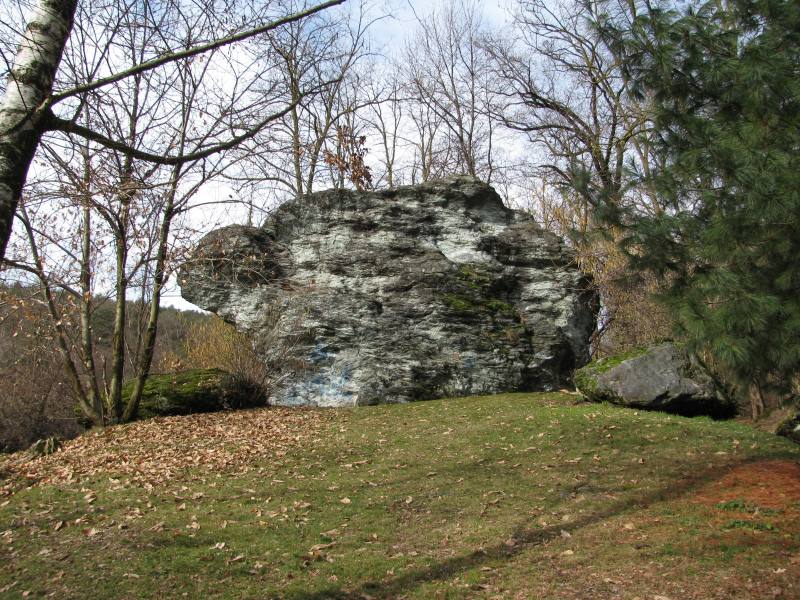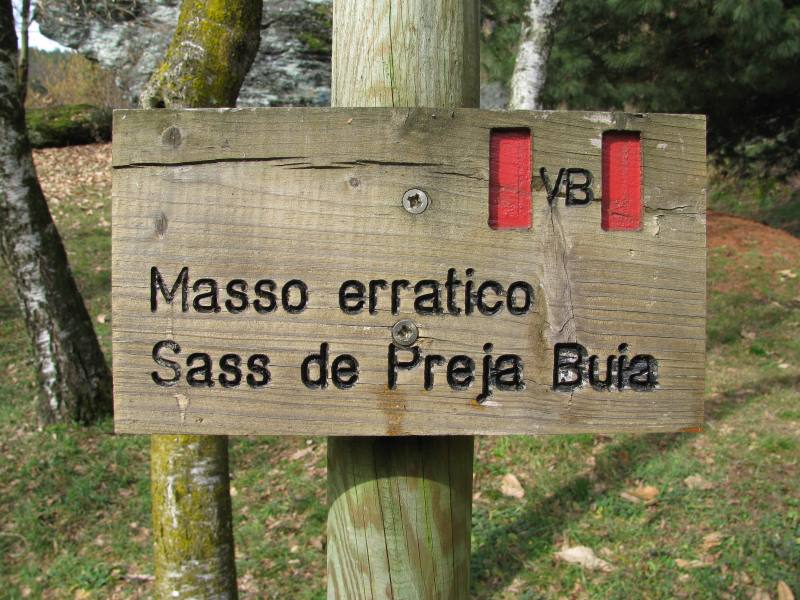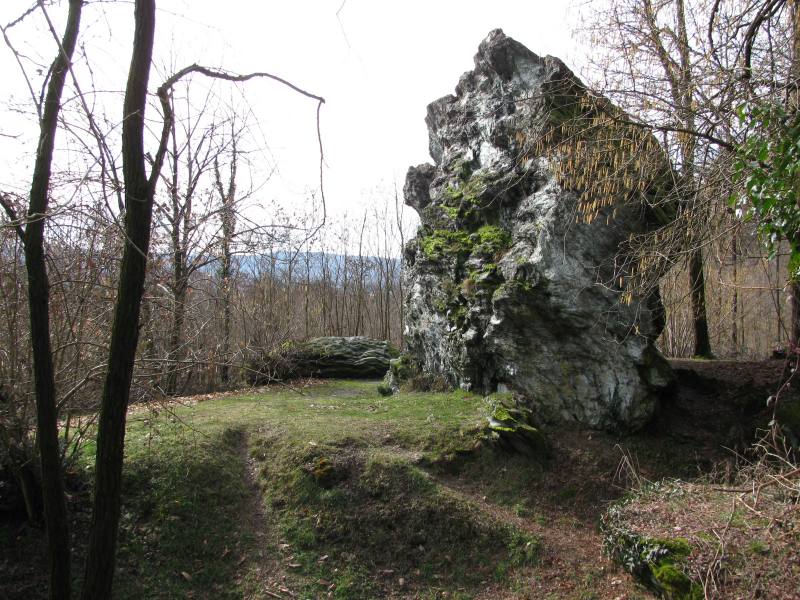Shown above is the Sass da Preja Buia, a large, erratic serpentinite boulder found to the northwest of Sesto Calende Italy,
in the province of Varese. It dates back to the Quaternary Period, likely the most recent (last) glaciation.
A glacier, in its retreat, dragged both moraine material and large boulders which, like this one, slipped up to its present location from the Val d'Ossola.
In historical times, it's thought that the Sass da Preja Buia was used as a sacrificial altar.
Because of both its historical and geological significance, this green-colored erratic is designated as one of the natural monuments of the Varese area.
Photo taken on June 30, 2019.
Sass da Preja Buia or Sass de Preja Buia is the north-west area of Sesto Calende in San Vincenzo. It's a large glacial erratic dating back to the Quaternary period. It was declared a regional natural monument due to its historic and geological importance.
History of Sass da Preja Buia
According to the most probable hypotheses, Sass da Preja Buia was likely a sacrificial altar in ancient times. In fact, there are several petroglyphs of a symbolic and cultural nature dating back to the pre-historic period. There are many other glacial erratics in the surrounding areas, with many other petroglyphs.
The massif dates back precisely to the last Neozoic glaciation. The progressing glacier dragged both moraine material and large boulders, which by literally wandering, arrived in this countryside.
There are other famous glacial erratics close to Lake Maggiore, including Sass Cavalasc in Ranco, and Sasso Galletto in Castelveccana, which directly emerges from the waters of the lake.
The legend of Sass da Preja Buia
Given its charming shape, Sass da Preja Buia has stimulated popular imagination and given rise to several legends. The most creative and well-known one tells of the rage and jealousy of Jupiter towards a fisherman who took a fancy to the god Venus who had risen from the waters. Transformed into a dragon, the fisherman started a great fire with his fiery breath [there is still an area in Sesto Calende called fossa del drago (dragon's pit)]. His wife and children, who were waiting for him unaware of the fact, had to escape from the fire along with the rest of the population. At a certain point his children were exhausted and could go no further, and the fisherman's wife decided to protect them from the smoke and heat using her body. They were found hugging each other and the woman's body at the site of the cremation was transformed into the shape of a golden hen brooding her chicks. The shape and its golden and bronze nuances reminisces of that of the large glacial erratic, which since then signifies motherly love.
Curiosity about Sass da Preja Buia
The massive is also a powerful magnetic point. Check it out by getting close to the massive with a compass and see how it reacts!



Sesto Calende, Italy Coordinates: 45.7307, 8.6366


